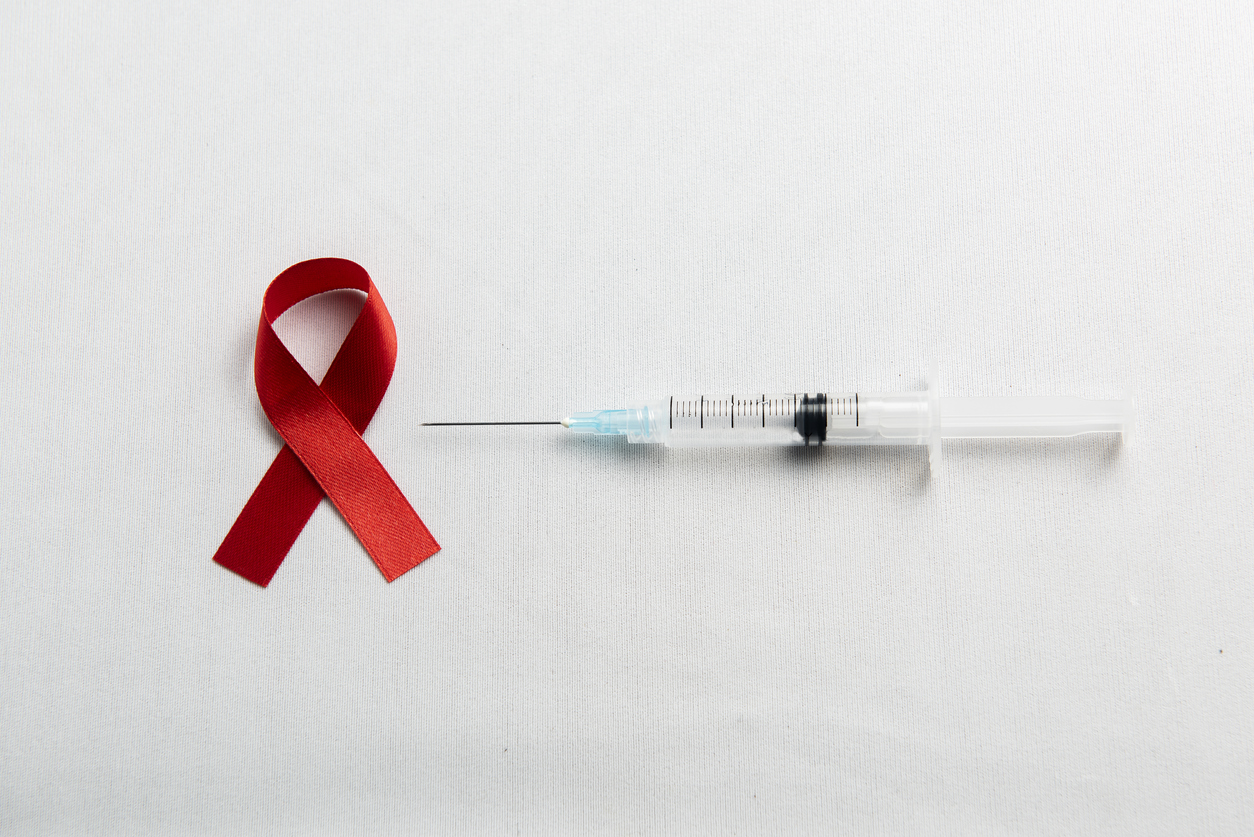2025-05-07
Lupus under control?
Allergology and Immunology
#Lupus #SLE #Baricitinib #JAK #Autoimmunity
Systemic lupus erythematosus (SLE) is a chronic autoimmune disease characterized by the aberrant production of autoantibodies and multisystem inflammation. Its clinical expression is heterogeneous and unpredictable, with acute flares alternating with remission phases, making management particularly complex. SLE predominantly affects women of childbearing age, raising specific issues related to fertility and obstetric care.
Despite recent therapeutic advances, lupus management still relies mainly on conventional symptomatic treatments (antimalarials, anti-inflammatory corticosteroids, immunosuppressants, etc.). As a result, patients often exhibit persistent disease activity despite standard therapies, exposing them to an increased risk of irreversible damage and significant morbidity.
Janus kinase (JAK) inhibitors, particularly baricitinib, have caught the attention of the scientific community. By targeting intracellular pathways involved in the signaling of multiple pro-inflammatory cytokines, baricitinib acts on both innate and adaptive immunity. Several studies suggested a significant reduction in lupus activity with a favorable safety profile. However, the two trials — SLE-BRAVE-I and SLE-BRAVE-II — yielded conflicting results, complicating the interpretation of the treatment’s actual efficacy.
In this context, the present study was initiated to assess the efficacy and safety of baricitinib in patients with active lupus.
Combined data from 1,535 patients with active lupus were analyzed. All were receiving standardized background therapy and were randomly assigned to one of three groups: baricitinib 4 mg, baricitinib 2 mg, or placebo. Treatment lasted for 52 weeks. The primary endpoint was the proportion of patients achieving an SRI-4 response at the end of the study.
Overall results showed no significant difference between the baricitinib-treated groups and the placebo group (52% vs 46%, p > 0.05). However, notable benefits were observed in specific subgroups:
The safety profile was generally similar across groups. No major increase in serious adverse events was noted, except for a slight uptick in herpes zoster infections in the baricitinib 4 mg group (5%).
Systemic lupus erythematosus is a chronic and heterogeneous autoimmune disease that remains difficult to control long-term. Despite available treatments, many patients experience therapeutic failure or require prolonged corticosteroid therapy, which is a major source of complications. One of the current challenges is identifying targeted therapies that can modulate inflammatory activity without increasing the medication burden.
This study aimed to evaluate the efficacy and safety of baricitinib, a JAK inhibitor, in patients with active lupus. The results, combined with findings from the SLE-BRAVE-I and II trials, show that baricitinib does not significantly reduce lupus activity across the entire studied population. However, efficacy signals were observed in certain subgroups, especially in highly active patients or those on high-dose corticosteroids at baseline. Moreover, the treatment’s safety profile remains generally satisfactory and aligns with other known indications for the drug.
Additional studies are needed to confirm baricitinib’s relevance in well-defined subgroups of lupus patients. The observed efficacy in certain clinical profiles, particularly in highly active or heavily treated patients, suggests a potential for targeted therapeutic use that warrants further exploration. To achieve this, it is essential to identify predictive biomarkers of response to better select patients likely to benefit from the treatment.
Simultaneously, adjusting evaluation criteria—often insufficiently sensitive to clinically relevant variations—emerges as a key methodological lever. The design of future clinical trials should rely on more refined recruitment strategies, focused on homogeneous clinical phenotypes and integrating biological, immunological, and pharmacogenetic parameters. These advances would support the emergence of a more stratified and personalized therapeutic approach to lupus, overcoming the limitations of current treatments and addressing each patient’s specific needs.
Systemic lupus erythematosus (SLE) is a chronic autoimmune disease characterized by the aberrant production of autoantibodies and multisystem inflammation. Its clinical expression is heterogeneous and unpredictable, with acute flares alternating with remission phases, making management particularly complex. SLE predominantly affects women of childbearing age, raising specific issues related to fertility and obstetric care.
Despite recent therapeutic advances, lupus management still relies mainly on conventional symptomatic treatments (antimalarials, anti-inflammatory corticosteroids, immunosuppressants, etc.). As a result, patients often exhibit persistent disease activity despite standard therapies, exposing them to an increased risk of irreversible damage and significant morbidity.
Janus kinase (JAK) inhibitors, particularly baricitinib, have caught the attention of the scientific community. By targeting intracellular pathways involved in the signaling of multiple pro-inflammatory cytokines, baricitinib acts on both innate and adaptive immunity. Several studies suggested a significant reduction in lupus activity with a favorable safety profile. However, the two trials — SLE-BRAVE-I and SLE-BRAVE-II — yielded conflicting results, complicating the interpretation of the treatment’s actual efficacy.
In this context, the present study was initiated to assess the efficacy and safety of baricitinib in patients with active lupus.
Targeted treatment or fancy placebo?
Combined data from 1,535 patients with active lupus were analyzed. All were receiving standardized background therapy and were randomly assigned to one of three groups: baricitinib 4 mg, baricitinib 2 mg, or placebo. Treatment lasted for 52 weeks. The primary endpoint was the proportion of patients achieving an SRI-4 response at the end of the study.
Overall results showed no significant difference between the baricitinib-treated groups and the placebo group (52% vs 46%, p > 0.05). However, notable benefits were observed in specific subgroups:
- Among patients receiving ≥10 mg/day of prednisone at baseline, response rates were significantly higher in the baricitinib 4 mg (74%) and 2 mg (71%) groups compared to placebo (p < 0.01);
- In highly active patients (SLEDAI-2K ≥10), baricitinib 4 mg demonstrated enhanced efficacy.
The safety profile was generally similar across groups. No major increase in serious adverse events was noted, except for a slight uptick in herpes zoster infections in the baricitinib 4 mg group (5%).
Read next: Efficacy and safety of biotherapies in the treatment of systemic lupus erythematosus
A step toward precision
Systemic lupus erythematosus is a chronic and heterogeneous autoimmune disease that remains difficult to control long-term. Despite available treatments, many patients experience therapeutic failure or require prolonged corticosteroid therapy, which is a major source of complications. One of the current challenges is identifying targeted therapies that can modulate inflammatory activity without increasing the medication burden.
This study aimed to evaluate the efficacy and safety of baricitinib, a JAK inhibitor, in patients with active lupus. The results, combined with findings from the SLE-BRAVE-I and II trials, show that baricitinib does not significantly reduce lupus activity across the entire studied population. However, efficacy signals were observed in certain subgroups, especially in highly active patients or those on high-dose corticosteroids at baseline. Moreover, the treatment’s safety profile remains generally satisfactory and aligns with other known indications for the drug.
Additional studies are needed to confirm baricitinib’s relevance in well-defined subgroups of lupus patients. The observed efficacy in certain clinical profiles, particularly in highly active or heavily treated patients, suggests a potential for targeted therapeutic use that warrants further exploration. To achieve this, it is essential to identify predictive biomarkers of response to better select patients likely to benefit from the treatment.
Simultaneously, adjusting evaluation criteria—often insufficiently sensitive to clinically relevant variations—emerges as a key methodological lever. The design of future clinical trials should rely on more refined recruitment strategies, focused on homogeneous clinical phenotypes and integrating biological, immunological, and pharmacogenetic parameters. These advances would support the emergence of a more stratified and personalized therapeutic approach to lupus, overcoming the limitations of current treatments and addressing each patient’s specific needs.
Read next: Between cholesterol and systemic lupus erythematosus

Last press reviews
Twice-yearly injections to change the game?

By Ana Espino | Published on December 3rd, 2025 | 3 min read
HIV & young people: what if we changed the rules?

By Ana Espino | Published on December 2nd, 2025 | 2 min read
